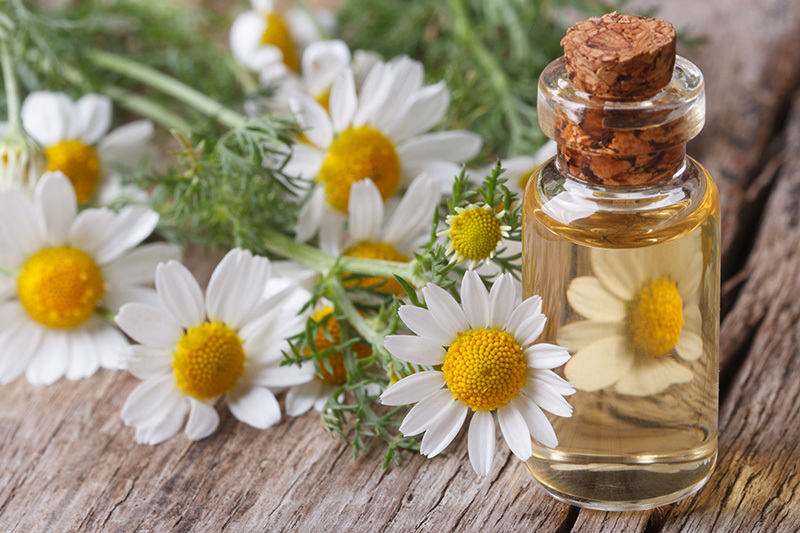Master the Art of Nurturing Orchids
Posted on 15/08/2025
Master the Art of Nurturing Orchids: The Ultimate Guide for Beginners and Enthusiasts
Orchids have mesmerized garden lovers and collectors for centuries with their exquisite blooms, intricate shapes, and stunning colors. Nurturing orchids may seem daunting, but with tailored care and a solid understanding of their needs, anyone can master the art of growing these enchanting plants at home. Whether you're an aspiring orchidist or a seasoned grower, this comprehensive guide will unlock the secrets to cultivating vibrant, long-living orchids indoors or outdoors.

Understanding Orchids: Botanical Beauty and Unique Challenges
Orchids belong to one of the largest and most diverse plant families, Orchidaceae, with over 25,000 species worldwide. Their atmospheric roots, intricate blooms, and unique anatomy set them apart from typical houseplants. As epiphytes, most orchids naturally grow on trees, extracting moisture and nutrients from the air and rain rather than the soil. This unique adaptation is key to unlocking successful orchid care practices.
- Elegant diversity: Orchid varieties range from the classic Phalaenopsis (Moth Orchid) to the dramatic Cattleya, fragrant Oncidium, and exotic Dendrobium species.
- Flower longevity: Many orchids bloom for weeks or even months, rewarding patient caretakers with extended beauty.
- Air roots and pseudobulbs: Recognizing specialized structures like aerial roots helps avoid common mistakes in orchid cultivation.
Choosing the Right Orchid for Your Home
Before embarking on your orchid journey, select orchid varieties that thrive in your environment and suit your lifestyle. Some species are more forgiving and perfect for beginners, while others demand greater expertise. Consider these popular choices:
- Phalaenopsis (Moth Orchid): Best for beginners, these robust orchids adapt well to interior conditions and offer spectacular blooms in a rainbow of colors.
- Cattleya: Known for stunning, fragrant flowers, requiring bright light and attentive watering.
- Dendrobium: Versatile options with elegant canes, needing a cool, bright spot and a regular watering schedule.
- Oncidium: Nicknamed 'dancing lady,' they reward careful growers with sprays of yellow blooms; prefer humid conditions and filtered sunlight.
Visit local garden centers, orchid shows, or reputable online sources when purchasing an orchid. Examine leaves, roots, and flower spikes for signs of vigor and avoid plants with blemishes, limp leaves, or soggy roots.
Orchid Care Fundamentals: Light, Water, Humidity, and Temperature
1. Providing Optimal Light
Correct lighting is crucial in orchid cultivation. Orchids enjoy bright, indirect sunlight. Too much direct sun can scorch their delicate leaves, while too little stunts growth and flower production:
- Place orchids on an east- or west-facing windowsill for the best light exposure.
- South-facing windows may require sheer curtains to diffuse strong sunlight.
- Observe the leaf color: healthy leaves are light-to-medium green. Dark green suggests insufficient light; yellowish tones may indicate too much.
2. Watering Orchids: A Delicate Balance
Improper watering is the most common mistake when nurturing orchids. Orchids prefer consistently moist but not soggy roots:
- Check the potting mix: Water only when the top inch feels dry or the pot feels unusually light.
- Use lukewarm water: Avoid icy or hot water that can shock the roots.
- Never let orchids sit in standing water; ensure pots have adequate drainage.
- Spritz aerial roots lightly if your home is particularly dry.
Tip: In general, water once a week during active growth and space out watering in cooler months. Always err on the side of underwatering rather than overwatering!
3. Humidity and Air Circulation
Orchids hail from humid climates and thrive in environments with 50-70% humidity. If your home is dry, especially during the winter heating season, use these strategies:
- Place orchid pots on a pebble tray filled with water (ensuring the pots don't sit directly in water).
- Use a room humidifier near your orchid collection.
- Group multiple plants together to naturally increase humidity.
- Maintain gentle air movement with a small fan set on low, preventing fungal issues.
4. Temperature Guidelines
Most household orchids flourish in daytime temperatures between 65-75?F (18-24?C) and nighttime lows around 60?F (16?C). Some species, like Dendrobium, benefit from cooler nights to stimulate flowering. Avoid cold drafts or abrupt temperature shifts, which may stress your orchid.
Mastering Potting and Orchid Media
Standard potting soil suffocates orchid roots. Instead, use a specialized orchid potting mix--a blend of chunky bark, sphagnum moss, perlite, and sometimes charcoal:
- Repot orchids every 1-2 years, when roots outgrow the container or media starts decomposing.
- Choose clear plastic pots with drainage holes to monitor root health and facilitate photosynthesis.
- After repotting, withhold water for a few days to let any damaged roots heal, reducing the risk of rot.
Pro Tip: Root health is vital for successful orchid care; healthy roots are plump and silvery-green when hydrated.
Fertilizing Orchids: Feeding for Gorgeous Blooms
Orchids are light feeders but do benefit from regular fertilization. Use a balanced orchid fertilizer (20-20-20) or one specifically formulated for orchid species. During active growth, feed lightly every two weeks; reduce to monthly during the resting period.
- Dilute fertilizer to half or quarter strength to avoid burning sensitive roots.
- "Weakly, weekly" is a good mantra--orchids prefer gentle, consistent nourishment.
- Flush the pot with plain water monthly to remove salt buildup.
Encouraging Re-Blooming: Nurturing Orchids Beyond the First Blossoms
The thrill of your first orchid bloom is immense, but understanding the art of re-blooming extends your enjoyment year after year. Here's how to encourage your orchid to bloom again:
- Prune the flower spike after blooming, cutting just above a healthy node.
- Increase light exposure slightly during the pre-bloom period.
- Adjust temperature: A slight drop in night temperatures (by 10?F/5?C) can trigger many orchid species to re-bloom.
- Resume regular feeding during new growth, but pause fertilizing if the plant seems dormant.
Patience and observation are crucial in mastering the re-bloom cycle. Each orchid species has unique triggers; learning to read your plant's cues is essential.
Common Orchid Problems and Solutions
Pest Control
The most common orchid pests are mealybugs, spider mites, and scale insects:
- Inspect plants regularly for sticky residue, webbing, or tiny crawling insects.
- Remove pests manually with a cotton swab dipped in isopropyl alcohol.
- Isolate infested plants and treat with insecticidal soap if necessary.
Leaf and Root Issues
- Yellowing leaves: Usually due to inadequate light or old age; adjust placement or remove the oldest leaves.
- Wrinkled or shriveled leaves: Indicate underwatering, root rot, or poor root health; check roots and adjust watering habits.
- Mushy, brown roots: Almost always a sign of overwatering or poor drainage--repot immediately.
Addressing these issues early ensures you continue nurturing thriving orchids for years to come.
Orchid Care Year-Round: Seasonal Adjustments
Orchids require subtle changes to their care routines throughout the year:
- Spring and Summer: Increase watering and fertilization as orchids enter active growth; ensure extra airflow and humidity during heat.
- Fall and Winter: Reduce watering and fertilizer, and consider moving plants closer to the light source as days shorten.
- Monitor for pests during seasonal transitions, when stress can make orchids more susceptible.
Advanced Orchid Nurturing Techniques
Propagation
For those seeking to multiply their collection, propagation can be achieved through:
- Division: Gently separate mature plants to create new specimens, ensuring each division has a healthy set of leaves and roots.
- Keiki growth: Some orchids produce baby plants (keikis) on flower spikes, which can be potted when well developed.
Bloom Spike Staking
Support your orchid's flower spikes with bamboo stakes or specialty clips, adjusting as the spike grows to ensure straight, healthy displays.

Frequently Asked Questions About Nurturing Orchids
- How often should I water my orchid? Most orchids need watering once a week, but frequency depends on variety, pot size, and environment.
- Why aren't my orchids blooming? Often, this is due to insufficient light, lack of temperature drop at night, or over-fertilization.
- Can I grow orchids without a greenhouse? Absolutely! Many popular species adapt beautifully to windowsills and indoor conditions.
Conclusion: Becoming a Confident Orchid Grower
Mastering orchid care demands patience, curiosity, and a willingness to learn from mistakes. Successful orchid nurturing hinges on understanding your plants' unique needs--from light levels to watering rhythms, humidity management, and simple pest control. As you build a relationship with your orchids, you'll be rewarded with unparalleled blooms and the pride of coaxing exotic wonders in your own home.
Explore local orchid societies, online forums, and gardening groups for additional advice and community. With sustained care and observation, even novice growers can master the art of nurturing orchids, transforming ordinary living spaces into showcases of natural elegance and botanical fascination.
Ready to elevate your gardening journey? Unleash your green thumb and start nurturing orchids today--the beauty and satisfaction are well worth the effort!
Latest Posts
Unveil the Mood-Enhancing Secrets of Beautiful Blooms
Simple and Effective Methods for Flower Longevity
Ultimate Guide to Extending the Life of Poinsettias







